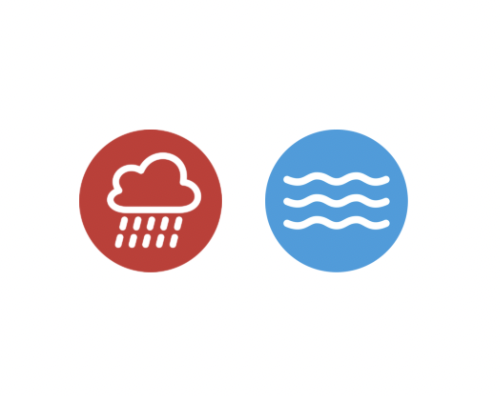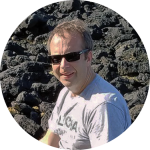SPONSOR:
National Institute for Water Resources, Water Resources Research Institute Program
PROJECT PERIOD:
3/1/2015 - 2/28/2016
ABSTRACT:
Island ecosystems have low buffering capacity, hence are highly vulnerable to change. Shifts in rainfall and temperature driven by climate change can compromise available water supply and alter the distribution of environmental pathogens. This can and will compromise drinking water resources on the Pacific islands while demands on potable water supply are escalating with population growth. There is need to balance existing water supplies with ever growing demands and augment natural supplies with the use of more climate-resilient technologies. A more sustainable approach to using water resources is needed.
Groundwater in American Samoa (AS) highly vulnerable to contamination as the volcanic strata is extremely permeable and has limited capacity to filter out contaminants. Seawater intrusion and decline of groundwater levels further decreases available water resources in AS, especially in areas where the freshwater lens is thin and highly susceptible to change. Although a majority of the population in AS is supplied with safe chlorinated drinking water, only 28% of AS residents believe that their water is safe to drink. Since 2010, a Boil water notice has been issued for most parts of AS advising the population to boil water due to the continual detection of bacteria such as Escherichia coli in the water system.
Rainwater harvesting (RWH) is an alternative source of water that many island communities use for drinking and other domestic purposes (showers, cleaning, gardening, etc.) when groundwater and/or surface water sources are compromised, limited or not available. RWH has several advantages, including: 1) reducing pressure on the mains water supply and energy demand, 2) reducing stormwater runoff that can often degrade ecosystem health, 3) providing an alternative water supply during times of water restrictions or disasters, 4) providing an “on – site” decentralized water supply requiring no larger infrastructure, 5) the water is often of superior quality compared to groundwater and water supplied by centralized systems, 6) usually is the property of an individual rather than the community ensuring a greater attitude of responsibility for repair and maintenance. Private, individual rainwater catchments are not regulated by state or federal guidelines in the United States and its territories and hence individual households rely on their own expertise when setting up and utilizing those systems. Currently there is no review or knowledge about how many households in AS utilize individual RWH systems, how is the water used and what type of safety measures are being followed. Most importantly, water quality and underlying factors determining the water quality in these systems have not been investigated in AS.
This is a research project that aims to evaluate the current use of individual rainwater harvesting systems and associated health risks in AS and sets the following objectives: 1) Examine and review RWH systems in AS: distribution, design and function. A general overview of RWH practices in AS; 2) Investigate the presence and frequency of distribution of common human pathogens in the main types of RWH systems used in AS. Molecular screening of human pathogens; 3) Investigate the source of microorganisms in selected RWHs. We hypothesize that wind-derived soil microorganisms are major contaminants in rainwater harvesting systems as indicated by a greater degree of similarity of microbial communities in harvested rainwater to the soil communities compared to microbial communities present in animal deposits; 4) Estimate potential health risks associated with different designs of RWH systems; 5) Empower communities in Samoa with well-informed RWH management practices.
PRINCIPAL INVESTIGATOR

